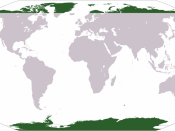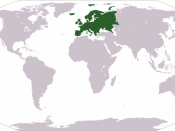"Geography is the science of the Earth's form, physical features, climate, population etc. and is usually divided into 3 branches, physical, human and biogeography" (Upshall, 1994:337). From this definition it's obvious that regional inequality is a leading geographical issue as the differences between core and peripheral regions have a profound effect on many areas of geography.
First it is important to define what exactly a region is. Obviously regions have to be of a unique location, differing from the surrounding areas and extend for as long as these differences exist. "A region shares common physical, social and economic characteristics" (Armstrong and Taylor, 2000:289). From this statement we can see that not all regions are similar so there will be clear differences on many social and economic levels.
Regions are usually divided into core and peripheral and it is here that the glaring disparities occur. But first it is important to distinguish between core and peripheral.
"A core region is highly developed, centrally located and is a prosperous urban-industrial economy" (O'Dwyer, 2000:113). Obviously these regions are going to be a centre for jobs and the strength of tertiary industry in a region is a good barometer of how developed a region is. Consequently if the majority of jobs are in this core region then it will attract a large population which in turn leads to the region being the centre of decision making. A good example is London, which has "over a sixth of England's population" (Hayes, 1998:116). London has the seat of government, is home to the head of the Monarchy and is home to many of Britain's largest industries.
Conversely, "a peripheral region is of marginal location with poor access to prosperous markets, limited job opportunities and low standards of living" (O'Dwyer, 2003:113). Peripheral is defined as "on the...


